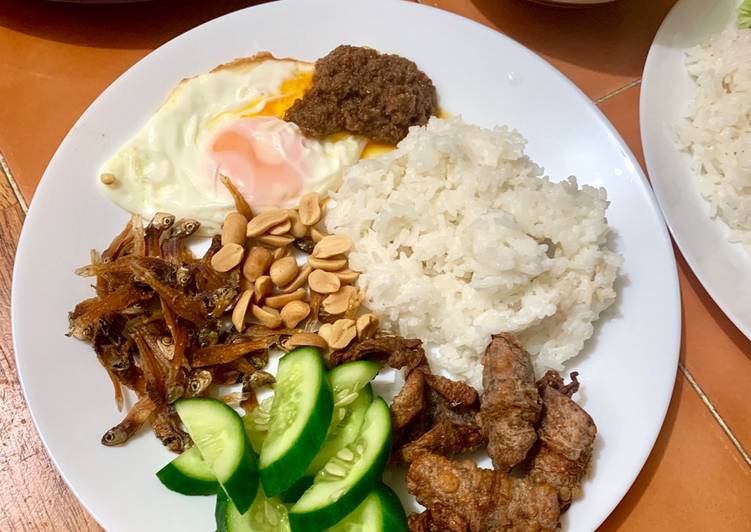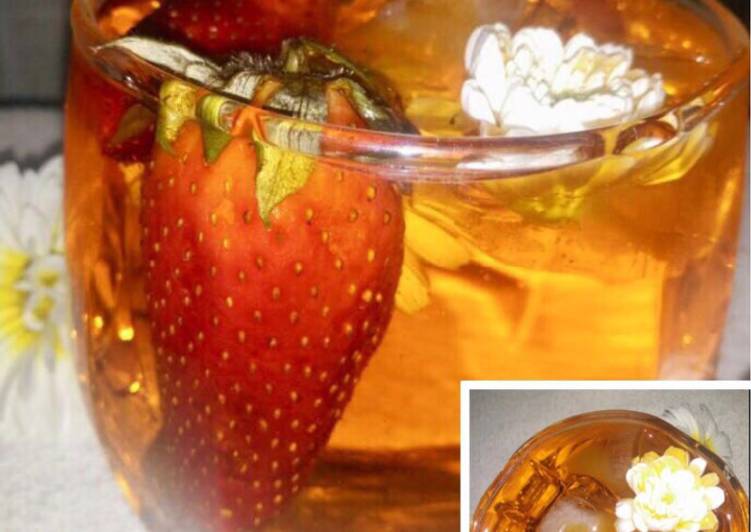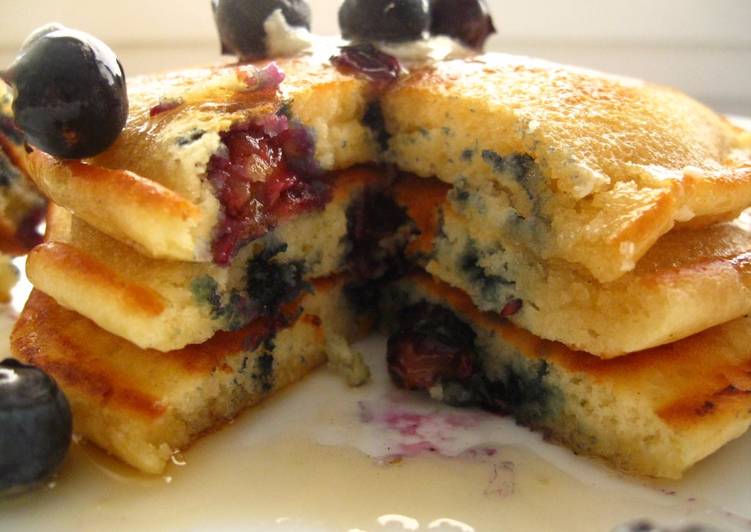
Hey everyone, it’s me again, Dan, welcome to my recipe site. Today, we’re going to make a special dish, nasi lemak. One of my favorites food recipes. For mine, I am going to make it a bit tasty. This will be really delicious.
Nasi Lemak is one of the most popular of recent trending meals in the world. It is simple, it’s fast, it tastes delicious. It is appreciated by millions daily. They are fine and they look fantastic. Nasi Lemak is something that I have loved my entire life.
Nasi lemak is a Malay cuisine dish consisting of fragrant rice cooked in coconut milk and pandan leaf. It is commonly found in Malaysia, where it is considered the national dish; it is also the native dish in neighbouring areas with significant Malay populations such as Singapore; Brunei, and Southern Thailand. There are a variety of side dishes served on top of the nasi lemak: fried anchovies, fried fish, hard-boiled egg, cucumber, sambal udang (shrimp) or sambal sotong (squid).
To get started with this particular recipe, we have to prepare a few components. You can have nasi lemak using 12 ingredients and 11 steps. Here is how you can achieve that.
The ingredients needed to make Nasi Lemak:
- Make ready 50 g dried anchovies
- Prepare 10 dried red chillies
- Make ready 5 medium-size red onions
- Make ready 3-5 fresh red chilies
- Get 2 stalks lemongrass
- Make ready 2 cloves garlic
- Prepare 1 tsp shrimp paste
- Get Vegetable oil
- Get 1 chicken bouillon
- Make ready 1 tbsp tamarind paste
- Take 1/2 tsp salt
- Make ready 1 tsp sugar
Nasi lemak literally means 'rice' and 'fat'. However, the 'fat' refers to the creaminess of the coconut milk which is used in cooking the rice. Nasi Lemak rice which is the recipe today, is simple enough to make, all you do is replace your usual water with coconut milk, fresh if you can get it, canned, otherwise. Always canned for me, here in the UK, but the one I use is organic, and only contains coconut milk and water.
Instructions to make Nasi Lemak:
- Re-hydrate the dried anchovies and dried chilies in 2 separate bowls by covering with with boiling water for 20 minutes.
- Peel and roughly chop onions and fresh red chilies, and blitz it in a blender or food processor until pasty consistency.
- Drain and de-seed the rehydrated chilies and add it to the blender.
- Drain the rehydrated anchovies and add it to the blender.
- Roughly chop the soft portion of the lemongrass and garlic, and add it to the blender.
- Add the shrimp paste in the blender and blitz all these ingredients until a smooth pasty consistency. Loosen up the paste with vegetable oil if too dry.
- Heat oil in a pan and add the paste. You need to have enough oil so that the paste do not burn. Turn the heat to low and let the paste caramelize for about 20 minutes, stirring occasionally so that the paste will not stick to the bottom of the pan.
- Breakdown the chicken bouillon and add to the paste. Add the salt and sugar. Cook for 2 minutes stirring regularly to distribute evenly.
- Add the tamarind paste. Stir to distribute and turn off the heat. Leave to cool.
- This sambal can be paired with any fried dish and is also good as dip for carrots, cucumber, and green mango.
- To put together the Nasi Lemak, cook rice in coconut milk with pandan leaves for vibrant smell. Once cooked, serve this with crispy fried anchovies, sliced fresh cucumber, toaster peanuts, fried egg and the sambal paste.
Throughout my school years, I would savor nasi lemak, wrapped in green banana leaves, at least three times a week. Inside the bundle was warm coconut rice infused with the vanilla-like aroma of pandan leaves and citrusy ginger accompanied by a hard-boiled egg, crispy fried anchovies and peanuts, a few slices of cucumber, and a dollop of sambal. Nasi Lemak (Coconut Milk Rice) is a popular traditional dish in Malaysia. It is usually served with a spicy sambal, sliced cucumber, deep-fried anchovies, fried peanuts and hard-boiled eggs. If there is one thing that never fails to unite Malaysians - it's food.
So that is going to wrap it up for this special food nasi lemak recipe. Thank you very much for your time. I am confident you will make this at home. There is gonna be interesting food in home recipes coming up. Don’t forget to bookmark this page in your browser, and share it to your loved ones, friends and colleague. Thank you for reading. Go on get cooking!


